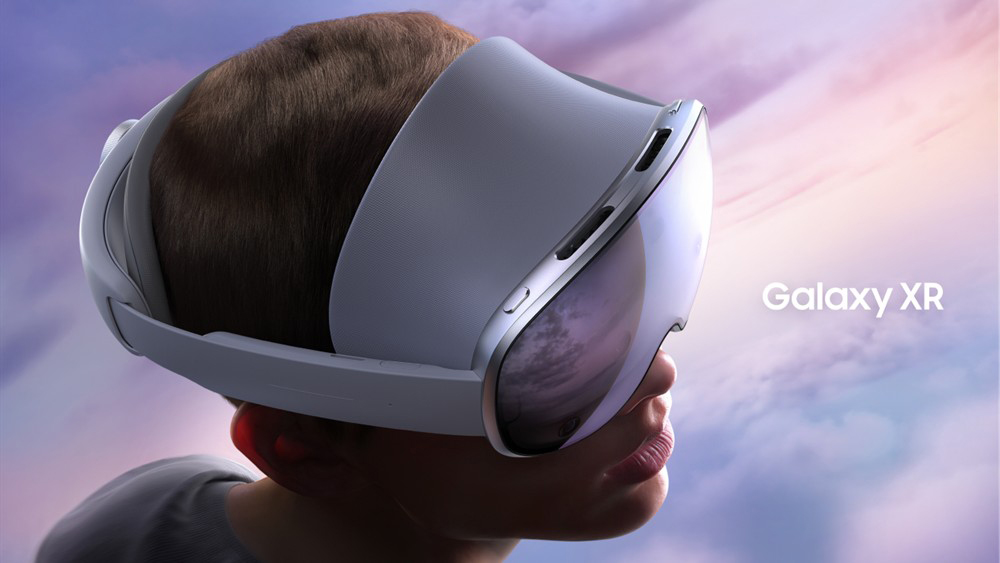Samsung Electronics introduced the Samsung Galaxy XR, marking a new chapter for AI-native devices designed to deliver immersive experiences optimized for multimodal AI.
As the first product built on the newly developed Android XR platform, created jointly by Samsung, Google, and Qualcomm Technologies, Galaxy XR represents the next phase of exploration, entertainment, and productivity — allowing users to enjoy seamless and natural interaction from everyday activities to bold new worlds.
“Through Galaxy XR, Samsung introduces a new ecosystem for mobile devices,” said Won-Joon Choi, Chief Operating Officer of the Mobile eXperience (MX) Business at Samsung Electronics. “Built on Android XR, Galaxy XR expands the mobile AI vision into an immersive and meaningful realm, turning XR from a concept into an everyday reality — for both industries and users.”
“Android XR is the first Android platform fully built for the Gemini era, and we are very excited to take this major step today with the launch of Galaxy XR,” said Sameer Samat, President of Android Ecosystem at Google. “Through our partnership with Samsung, Android XR will open new ways to explore, connect, and create — building an open and unified platform for the next evolution of computing.”
“Galaxy XR embodies our vision of a future where AI and XR redefine personal computing,” said Alex Katouzian, Group GM of Mobile, Compute & XR at Qualcomm Technologies, Inc. “We are thrilled to collaborate on this initiative, as Galaxy XR will bring new use cases across industries and enable multi-device experiences made possible through our partnership with Samsung and Google.”
A New Era of Multimodal AI Experiences
Galaxy XR introduces new possibilities through multimodal AI, offering users an intuitive way to connect with technology in daily life.
Built with Gemini AI integrated from the system level, Galaxy XR functions not merely as a tool but as a responsive and intelligent AI companion. It manages daily activities naturally and intuitively through voice, visual, and motion-based interaction.
In headset form, Galaxy XR can perceive the user’s surroundings — “seeing” and “hearing” what they do — enabling natural and human-like responses. This innovation provides a new way to interact with technology through immersive AI engagement.
An Open Collaboration to Build the Android XR Ecosystem
As part of its long-term vision for XR, Samsung is building an open ecosystem through strategic partnerships with Google and Qualcomm, creating new opportunities for the industry.
Developed jointly with these partners, Android XR serves as a strong foundation with AI at its core. The platform supports various form factors, including headsets, AI glasses, and future devices, positioning Galaxy XR within a flexible and scalable environment.
All Android-based applications can run directly on Galaxy XR, allowing users to enjoy familiar mobile experiences while exploring innovations.
Built on OpenXR standards, developers using OpenXR, WebXR, or Unity can easily bring their experiences to Galaxy XR, offering consumers greater choice and expanding opportunities for creators.
Designed for Comfort, Exploration, and Everyday Use
Galaxy XR is ergonomically designed for comfort during long-term use.
Through balanced form, advanced materials, and component optimization, the headset achieves the ideal ratio of lightness and durability. The balanced frame distributes pressure evenly across the forehead and back of the head, reducing discomfort and providing stable support.
A detachable light shield enhances immersion by blocking external light when needed. A separate battery unit keeps the headset compact and lightweight, ensuring comfort for extended wear.
Galaxy XR offers optimized XR experiences through apps such as Google Maps, YouTube, Circle to Search, and Google Photos.
Users can explore locations in a 3D immersive view, ask Gemini for personalized recommendations, or learn more about video content directly from YouTube.
In pass-through mode, users can see their physical surroundings and draw a circle with their hand to search for information about real-world objects. Galaxy XR also allows 2D photos and videos to be converted into 3D experiences, adding depth and new perspectives to personal memories.
Powered by the Snapdragon® XR2+ Gen 2 platform with Qualcomm® Hexagon™ NPU, Galaxy XR delivers next-generation immersive performance with ultra-high visual clarity.
Its 4K Micro-OLED display, spatial audio, and up to 2.5 hours of video playback provide uninterrupted enjoyment.
Galaxy XR enhances entertainment, sports, and gaming experiences.
Users can watch shows on a 4K Micro-OLED screen, experience sports from multiple angles as if they were in the stadium, and receive real-time assistance from Gemini while playing XR-based games.
With Adobe’s Project Pulsar, users can edit cinematic videos, add 3D depth effects, and position text or icons within immersive spatial canvases.
Expanding XR Capabilities for Enterprise
Samsung is extending Galaxy XR into enterprise use, offering XR-ready solutions for industries such as heavy engineering and construction.
In collaboration with Samsung Heavy Industries, the company uses Galaxy XR for virtual shipbuilding training, improving both productivity and workplace safety.
Samsung is also partnering with Qualcomm Technologies to leverage Snapdragon Spaces™, enabling access to the Enterprise ISV ecosystem.
Through this collaboration, developers can bring applications to Galaxy XR, creating new opportunities for businesses to adopt Android XR-optimized work solutions.
Connected seamlessly with the broader Android XR ecosystem, Samsung’s devices will combine advanced XR capabilities with comfort, style, and functionality — allowing users to explore, work, and enjoy entertainment without limits.
Galaxy XR is available starting October 21 in the United States and October 22 in South Korea.
PHOTO: SAMSUNG
This article was created with AI assistance.
Read More






 Wednesday, 17-12-25
Wednesday, 17-12-25







